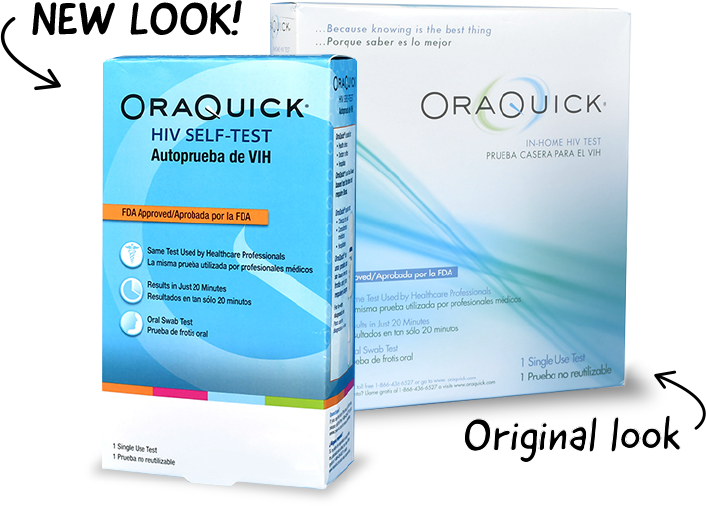Smaller Packaging. Easier Integration.
The first and only FDA-approved HIV self-test has been trusted by millions worldwide in over 130 countries for over 13 years. Now, we've redesigned the packaging to make it even easier to integrate into your programs, without changing the test itself.

The smaller, lighter packaging can support your programs through:

Simplified distribution and cost savings
Now ~50% smaller and ~90% lighter, reducing storage requirements and lowering shipping costs.
Full Pallet Load: Delivers ~50% more kits, maximizing warehouse space.
Single-Stack Truckload: Increases capacity by ~50%, enhancing distribution efficiency.
Increased portability and discretion for individuals
The compact format makes it easier for individuals to carry and store, increasing the likelihood of use – especially among testers facing stigma and shame.
Enhanced wraparound resources for support
Updated educational materials reinforce prevention and care options, as well as linkage-to-care strategies, helping you guide individuals through their testing journey.
Why oral fluid testing is beneficial to your program:

Non-invasive and user-friendly:
No self-inflicted pain, pricks, or anxiety, helping to increase test uptake. The CDC estimates that up to 25% of adults have a fear of needles, and a meta-analysis estimated that 16% of adults avoid flu vaccination due to this fear.1,2
Supports key demographics:
Needle phobia is most prevalent among adolescents (20-50%) and young adults (20-30%). The same groups where 60% of new HIV infections in the U.S. Occur.2,3
Recognized by the CDC:
The CDC has developed multiple tools to support individuals with needle phobia, recognizing its impact on public health engagement.4-6
Join the movement
This is more than a test, it's a global commitment to accessible, sustainable and stigma-free HIV testing.
Contact us to connect with our team and explore tailored solutions.
Or visit OraQuick.com to learn more.
Explore our Knowledge and Insights hub to explore real-world case-studies, webinars and stories from the field – designed to help you make informed, impactful decisions.
For comprehensive guidance on testing instructions and interpreting OraQuick HIV Self-Test results, refer to the directions provided with your in-home kit. Post-exposure detection of HIV may take up to three months, known as the window period, in which antibodies to the virus are developed. Testing during this window period may produce a negative result. With a positive result or if results are inconclusive seek additional testing in a medical setting.
The images shared on this website are being used for illustrative purposes only, and any person depicted in the content is a model, if not stated otherwise.
Resources:
1. https://www.cdc.gov/pinkbook/hcp/table-of-contents/chapter-6-vaccine-administration.html
2. https://pubmed.ncbi.nlm.nih.gov/30109720/
3. https://www.hiv.gov/hiv-basics/overview/data-and-trends/statistics
4. https://www.cdc.gov/disability-and-health/covid-19-resources/easy-read-needle-phobia.html
5. https://www.cdc.gov/disability-and-health/covid-19-resources/healthcare-providers-needle-phobia.html
6. https://www.cdc.gov/stophivtogether/hiv-testing/self-testing.html



